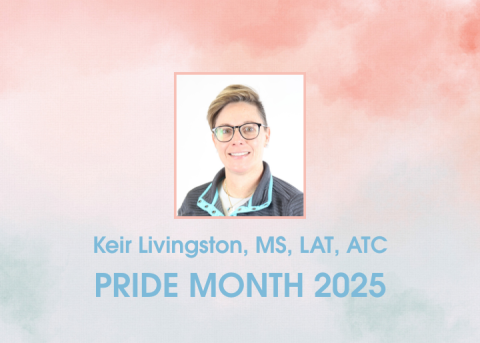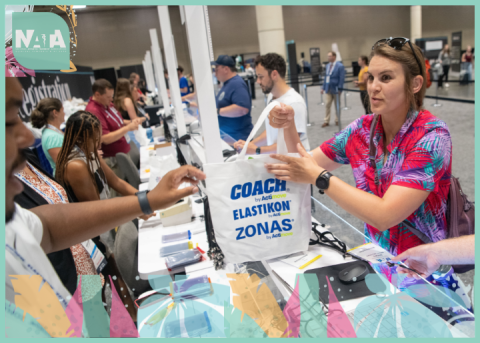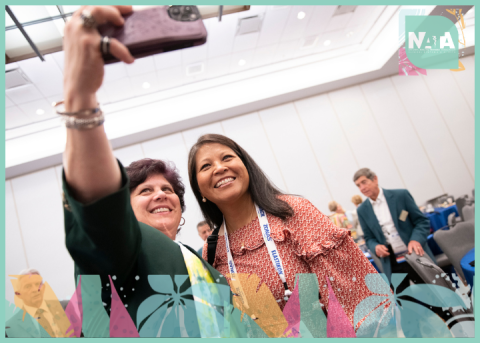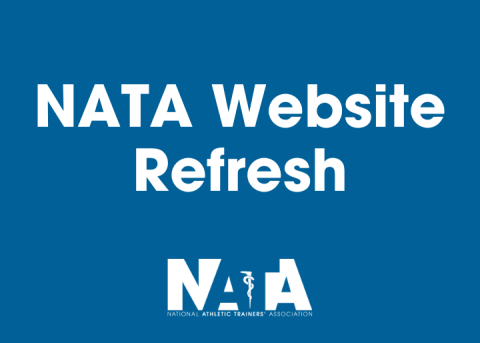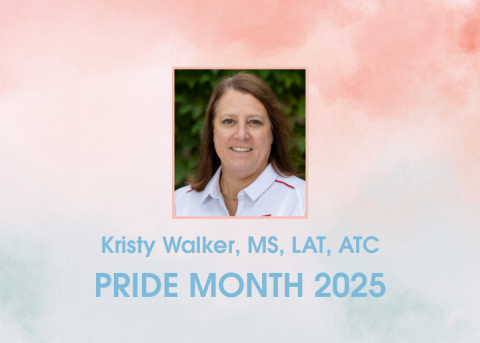
In honor of National Hispanic Heritage Month Sept. 15-Oct. 15, the NATA Now blog is highlighting some of our athletic training leaders at the state, district and national levels.
An athletic trainer’s prompt medical response to an athlete’s emergency injury during a Michigan State University football game inspired a dream in Amanda Brown, MPH, LAT, ATC.
“When I saw the female medical person run onto the field to care for the athlete, I knew that’s what I wanted to do,” Brown said. “At the time, I didn’t know it was an athletic trainer – Sally Nogle, PhD, ATC, to be specific – who was the initial medical responder, and I would soon after learn about the profession of athletic training. My future career goals were set after that.”
Since this experience, Brown has grown her career and now works in the armed forces setting, serving patients. As a volunteer, she has served a range of populations in the profession, such as young professionals and ethnically diverse groups. She has also dedicated herself to supporting the mentorship, public relations, education and professional development of her peers.
The NATA Post-Professional Education Committee District Eleven representative shares her volunteer journey and life as an athletic training leader.
What was your first volunteer position within the athletic training profession and why did you get involved?
My first volunteer position as a certified AT was serving as the Iowa Young Professional representative on the Mid-America Athletic Trainers’ Association Young Professionals’ Committee. I wanted to get involved because that’s the most direct way to facilitate change – for the better. I liked YPC because it dealt with issues that directly related to my situation and status.
What inspired you to pursue the role of NATA Post-Professional Education Committee District Eleven representative?
I wanted to join PPEC because post-professional education is somewhat of an emerging topic. With more and more specialty certifications becoming available, I thought it would be really interesting to be a part of what helped shape that landscape for the future.
How has volunteering helped you grow personally and professionally?
Volunteering not only keeps me involved in what’s going on with the profession, but it also provides an avenue to facilitate change when needed. This has helped me professionally to always see the big picture and not hone in on one specific topic or issue. Also, as I’ve worked with so many different people, it has drastically improved my communication and conflict resolution skills.
Why is representation in leadership important and how does it impact the profession?
Representation is vital to the success of our profession, not just for the patients we see, but also for the future generations of ATs. Seeing a woman run on to the field in a male-dominated sport was the key reason I wanted to do that job; had it been a male running onto the field, I’m not sure I would have taken as much notice. Representation matters – to open doors, to inspire and to be a voice for those they represent.
Why should ATs get involved in leadership and service?
Because getting involved provides you with the opportunity to make a difference, more so than if you didn’t get involved. It provides you with networking opportunities you wouldn’t get otherwise and builds relationships that can expand your career. To this day, I still maintain open communications with my fellow Young Professionals (#YP4Life) and Public Relations committee members.
What advice do you have for other athletic trainers who want to give back to the profession?
First and foremost, find something that you’re passionate about because volunteering can take up a lot of your time and energy, and if you feel like it’s being wasted, you either won’t continue with it or will be absolutely miserable doing it. Secondly, start small and grow your volunteerism. You don’t have to start at the top by serving on an NATA or other national committee. Start at the state or district level and build from there.

